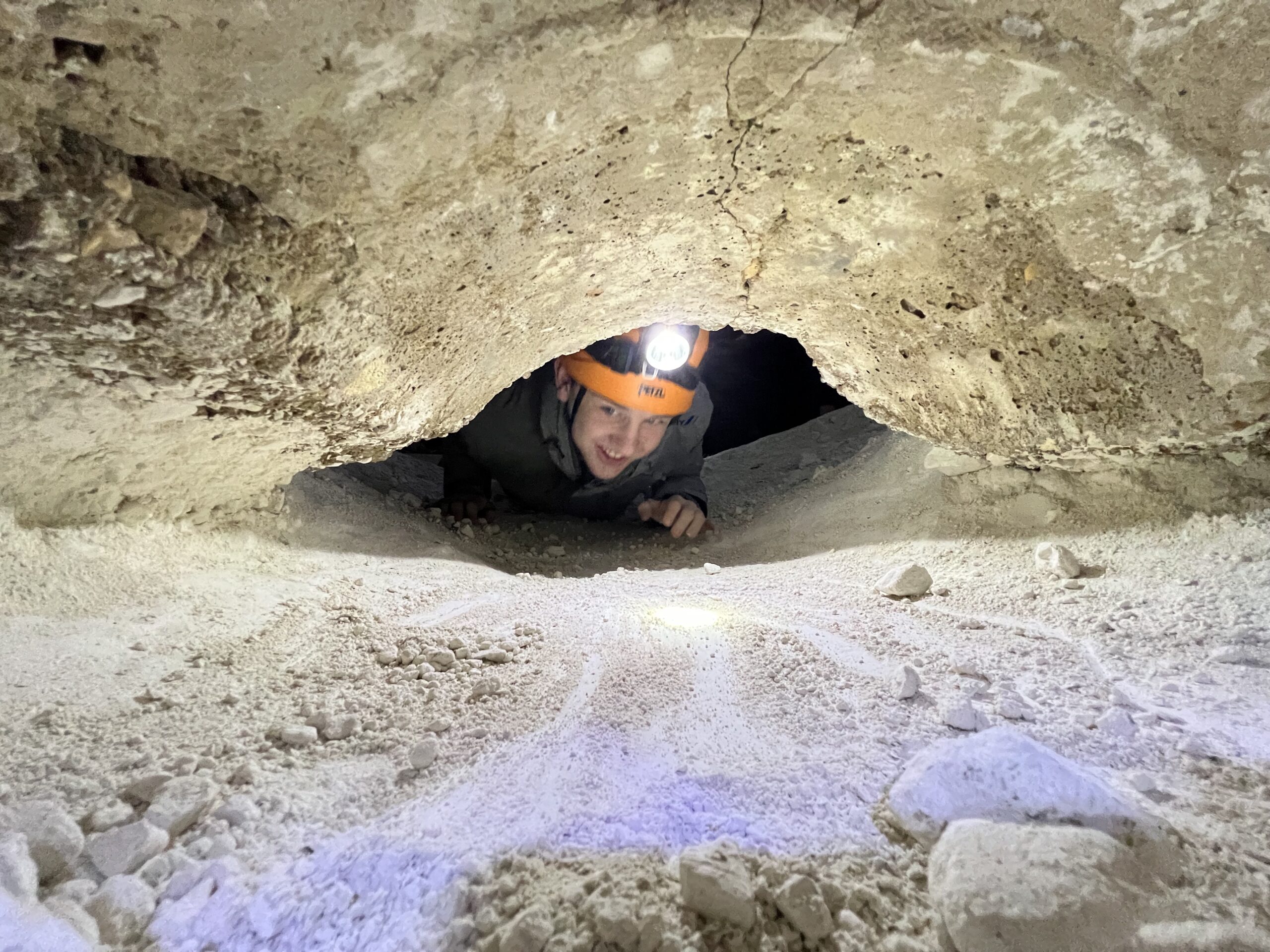Deep underneath the 89th Reading Scout hut at Milestone Wood, an adventure awaits like no other: a cavernous intersection of chalk mines dating back over four centuries ready to tell tales of history centuries old.
On a recent trip with an Explorer Unit from Berkshire, guided by the knowledgeable and passionate team of volunteers from the 89th, we were treated to the incredible experience and insight that this mine offers its courageous visitors.
Some of the Unit were cautious, and you might argue rightly so. We were equipped with our safety gear – harnesses and helmets (with light) – and preparing to descend 70 feet – that’s 21 metres (or five double decker buses if you prefer) – down an original mineshaft.
No sweat for a bunch of seasoned Explorers, right? Well, a few grimaces and nervous faces soon gave way to exhilaration as the rope was carefully lowered down and the realisation of our new underground surroundings became apparent.
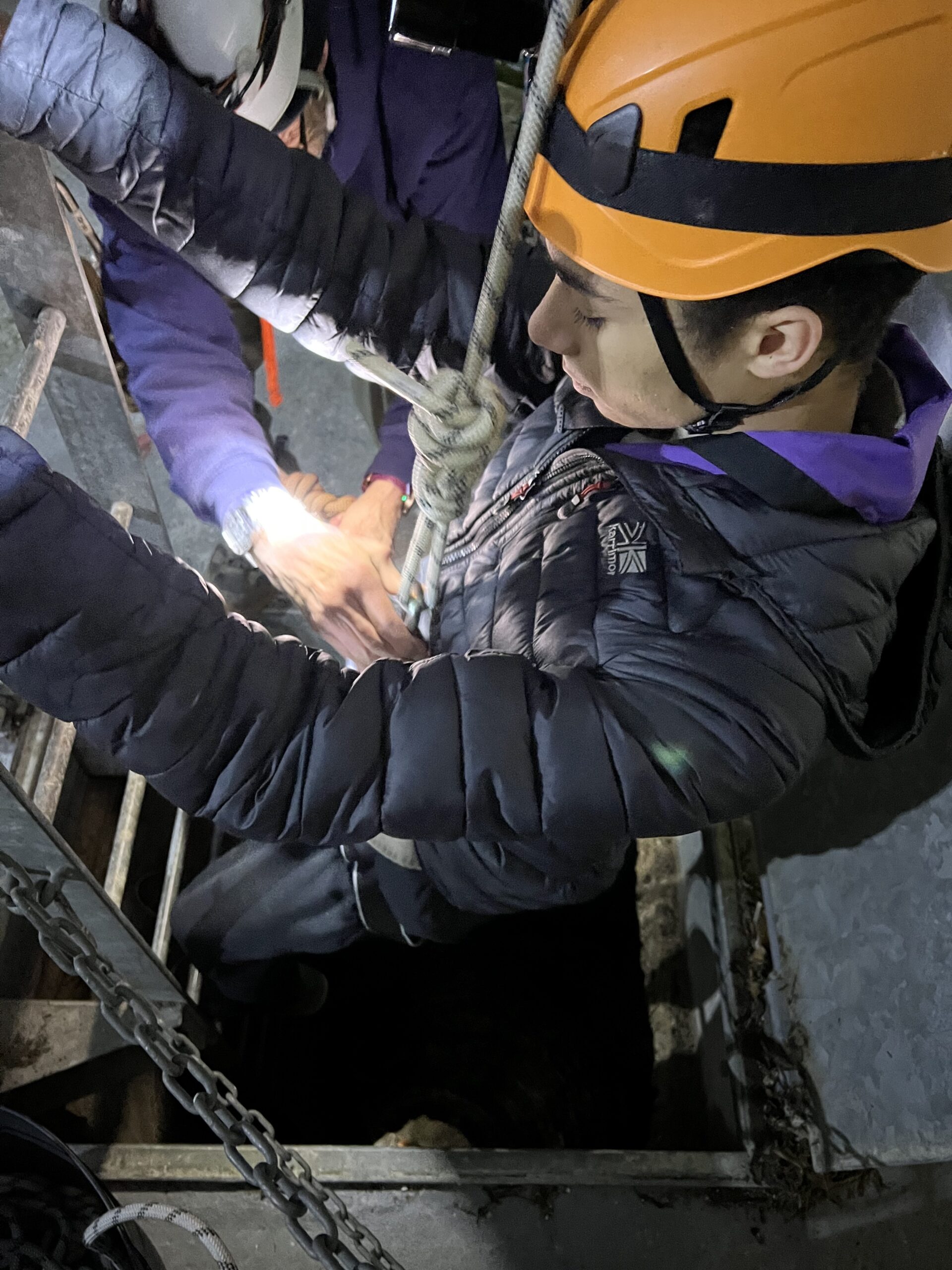
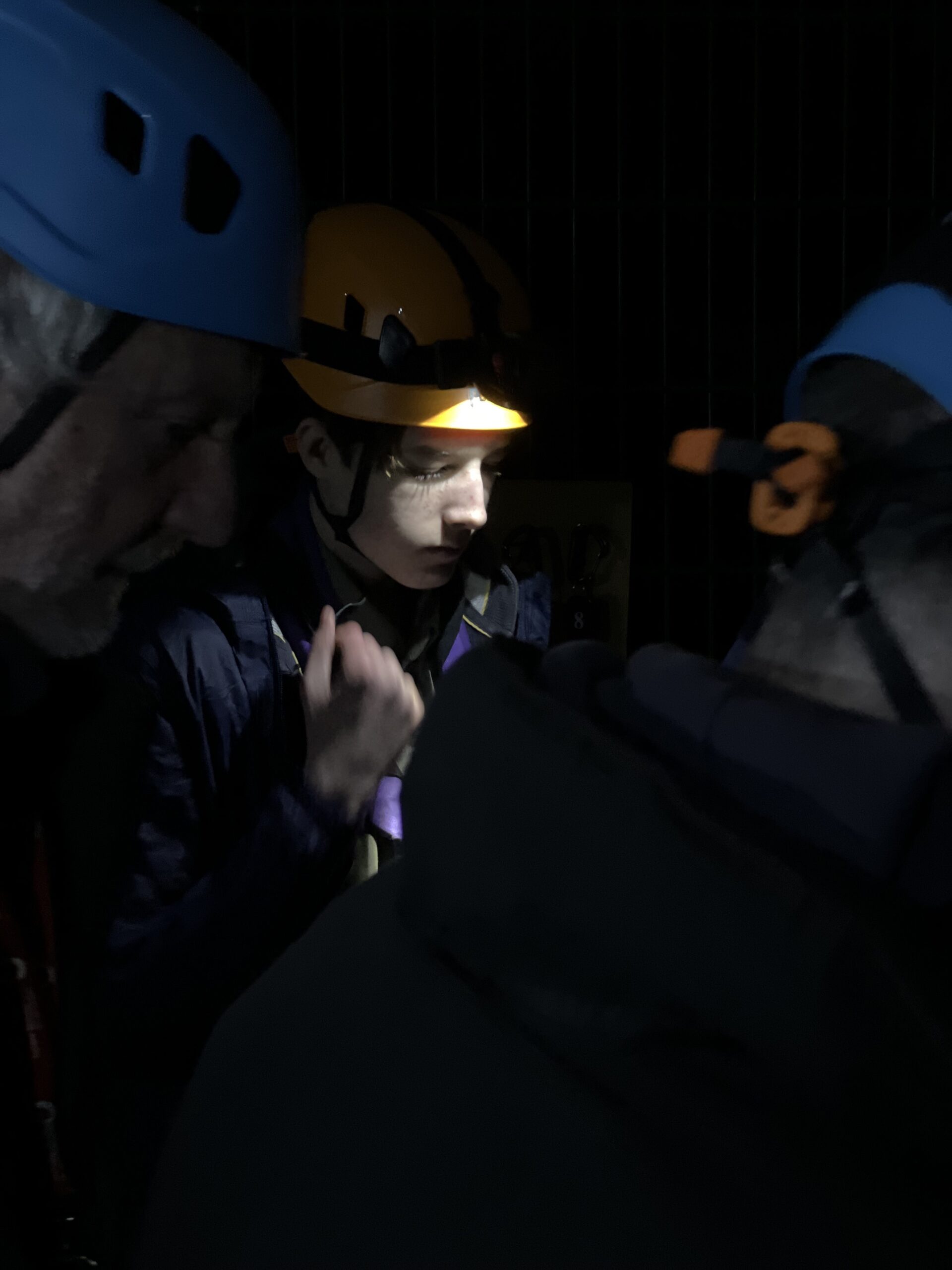
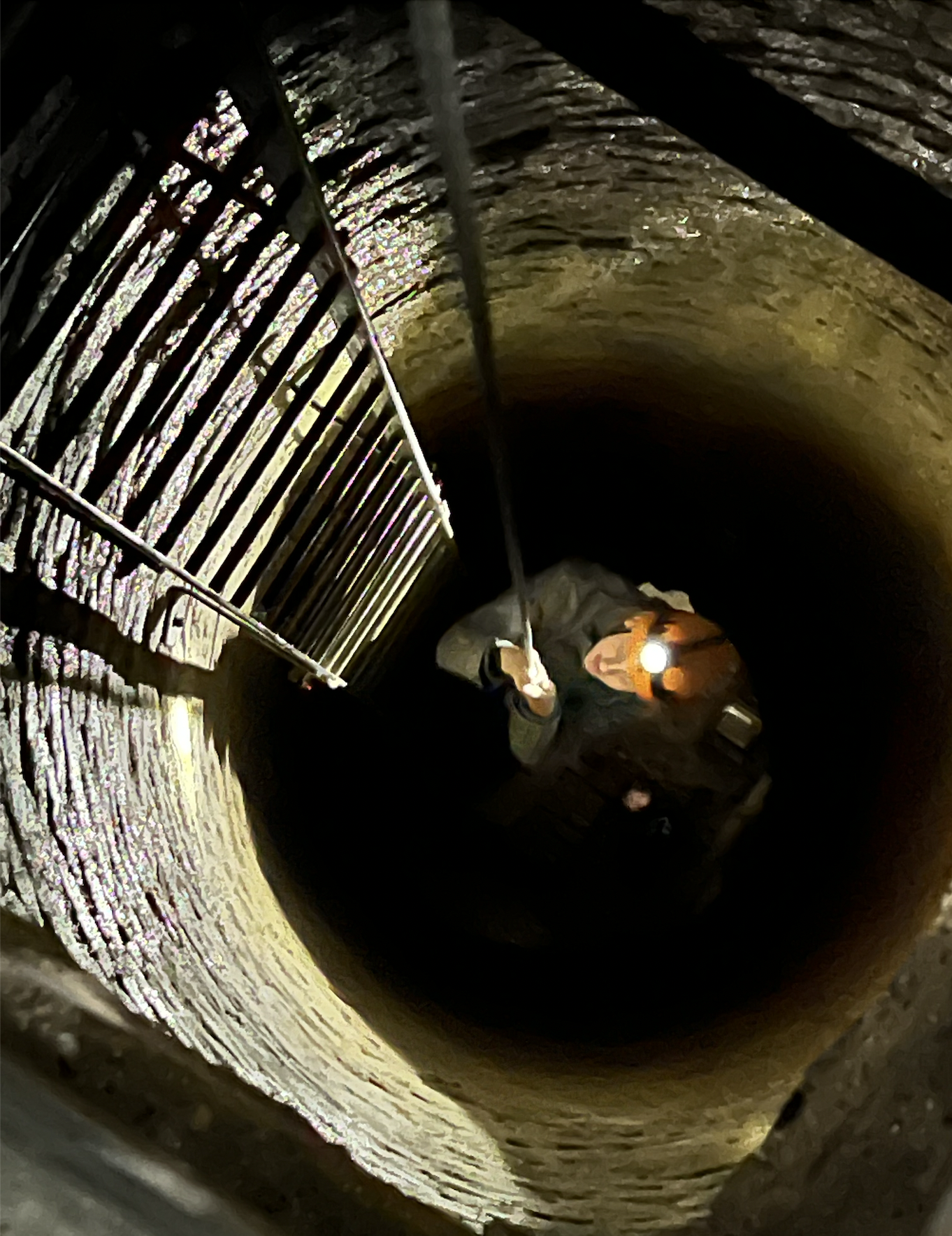
We were divided into two groups, ready to step back in time. But first, we couldn’t let the occasion go without an investiture! Gathering in the first spacious cave we welcomed our newest Explorer into the Unit formally before splitting up.
Suffice to say the mood was one of palpable excitement, and the perhaps unsurprising realisation that chalk is white – and covers everything. Cue handprints on the Explorer leader’s back, of course.
With caverns and passages as high as 20 feet, around six metres, there was plenty of space, while others were smaller and cosier. The torchlight offered us sufficient visibility – so when one of the guides told us to turn our lights off, the sudden darkness was, well, dark. Completely dark. Pitch black. Nothing. Not even a solitary ray. Enveloped by the obscurity, we quickly illuminated ourselves to avoid any previously undiagnosed nyctophobia.
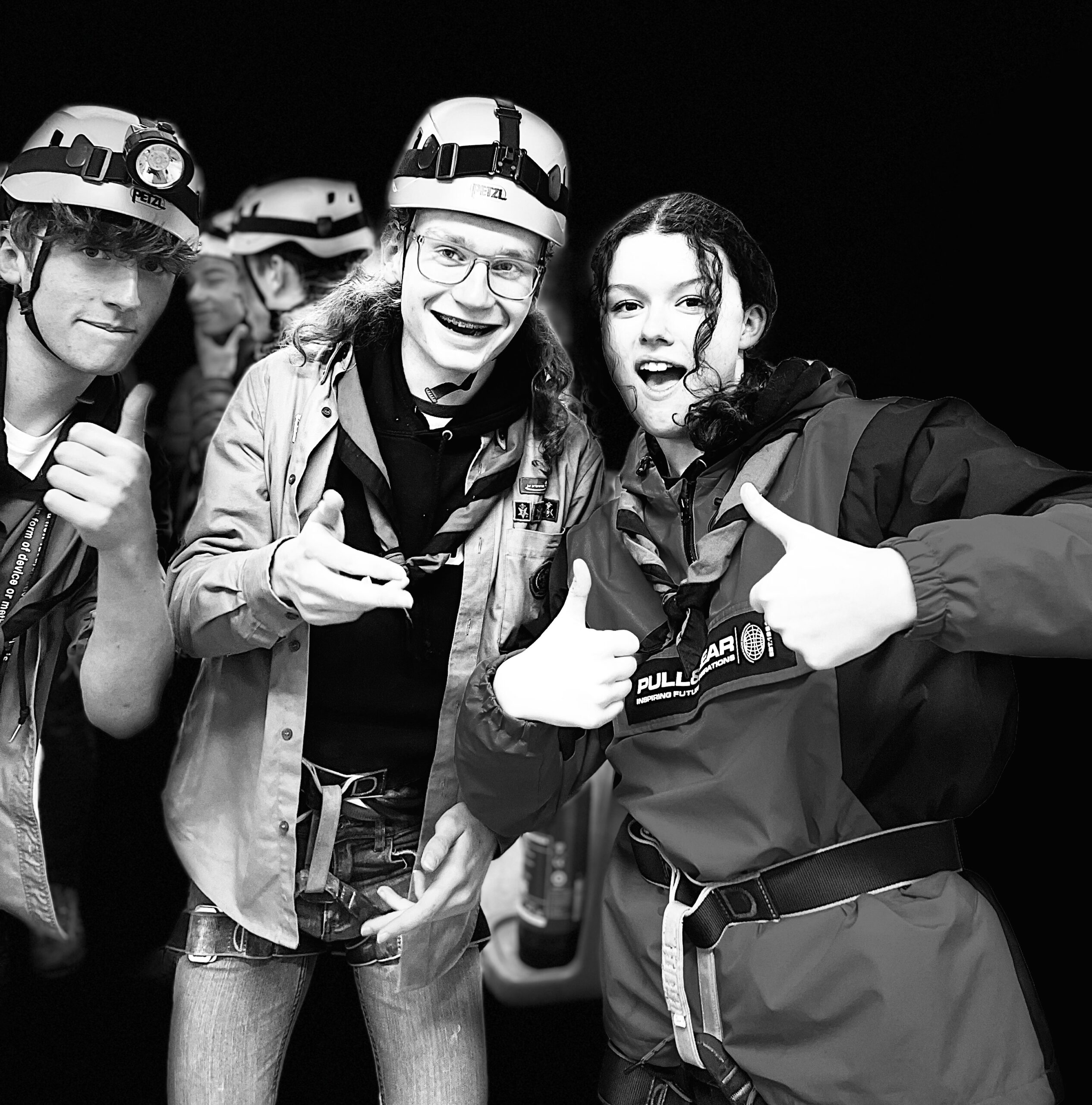
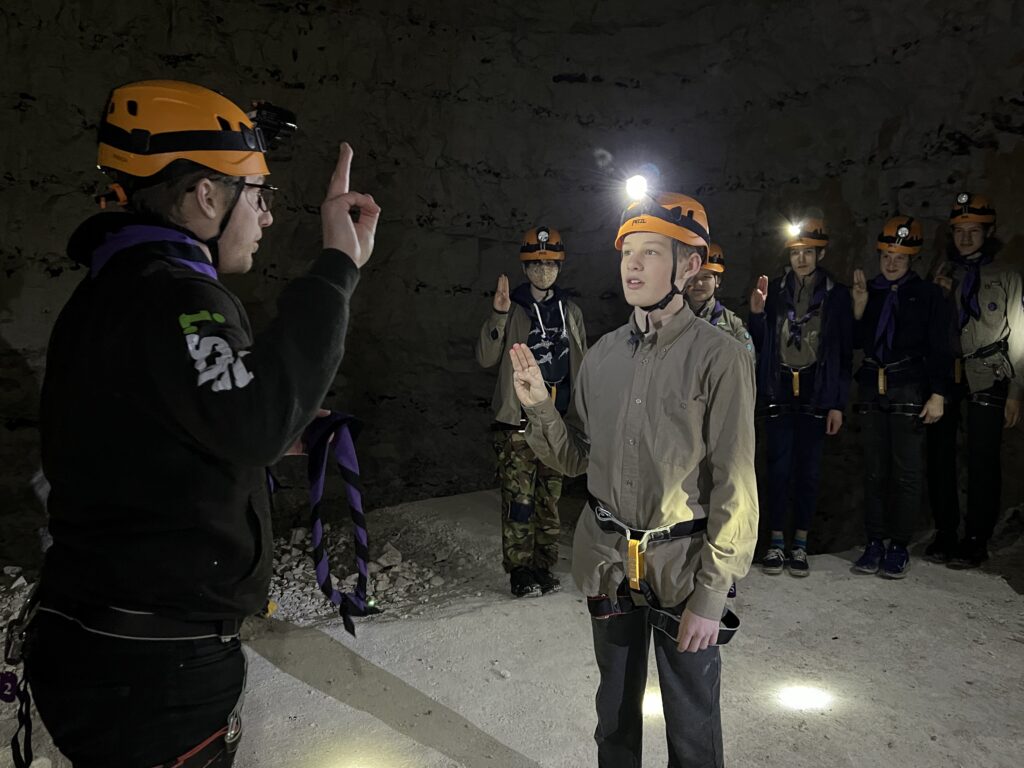
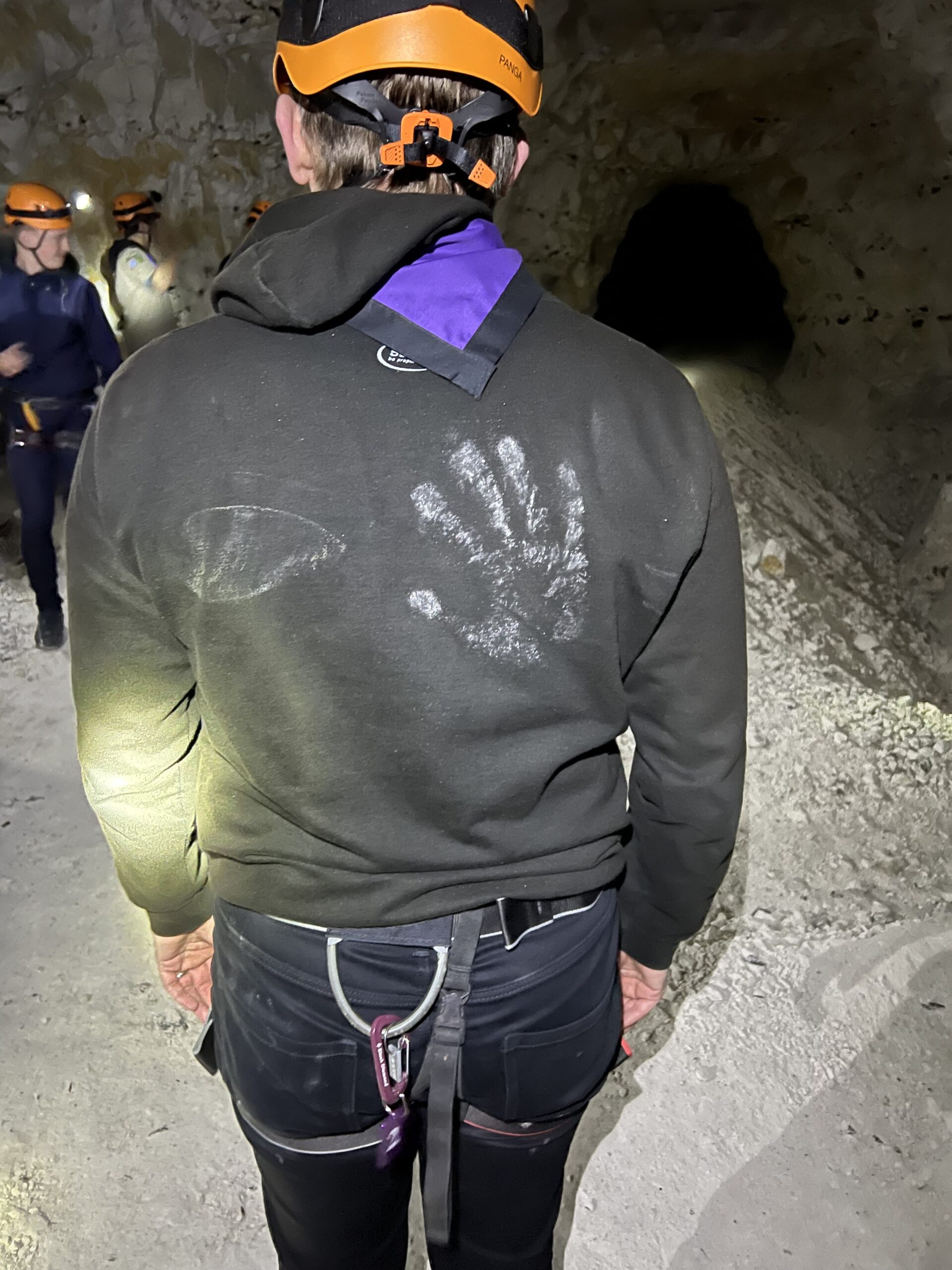
The geology of the mine goes back 70 million years. The 89th chalk mine history dates back almost 400 years, yet the chalk mining and brick making heritage of Caversham and Emmer Green are still largely unknown. Sitting just 20m under the surface the mine was once a hive of industry feeding the brickworks and employed hundreds of local people excavating the raw materials and crafting bricks to build homes and other local buildings.
The first written record of brickmaking and a brick kiln being on this site was in 1654. The oldest house in the area is 1490 so they were probably making bricks here before the 1600s. Workers and visitors liked to leave their mark in the chalk. There are names all around, the earliest of which is 1722. Visitors today are not allowed to add their names for preservation reasons – tempting though it is to leave a mark.
The mine itself is incredibly dry, to the extent that during the Second World War the mine found an alternative purpose — as a safe home for the county archives. All the county records were stored in the mine during WW2 together with the more valuable artefacts from Reading Museum.
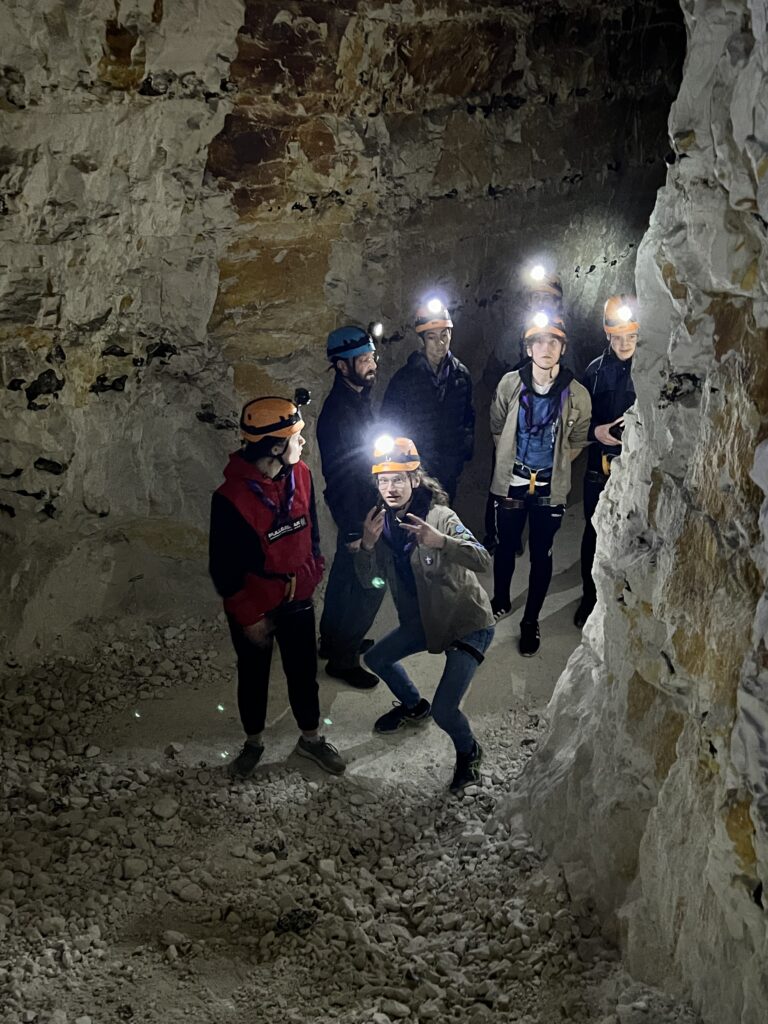
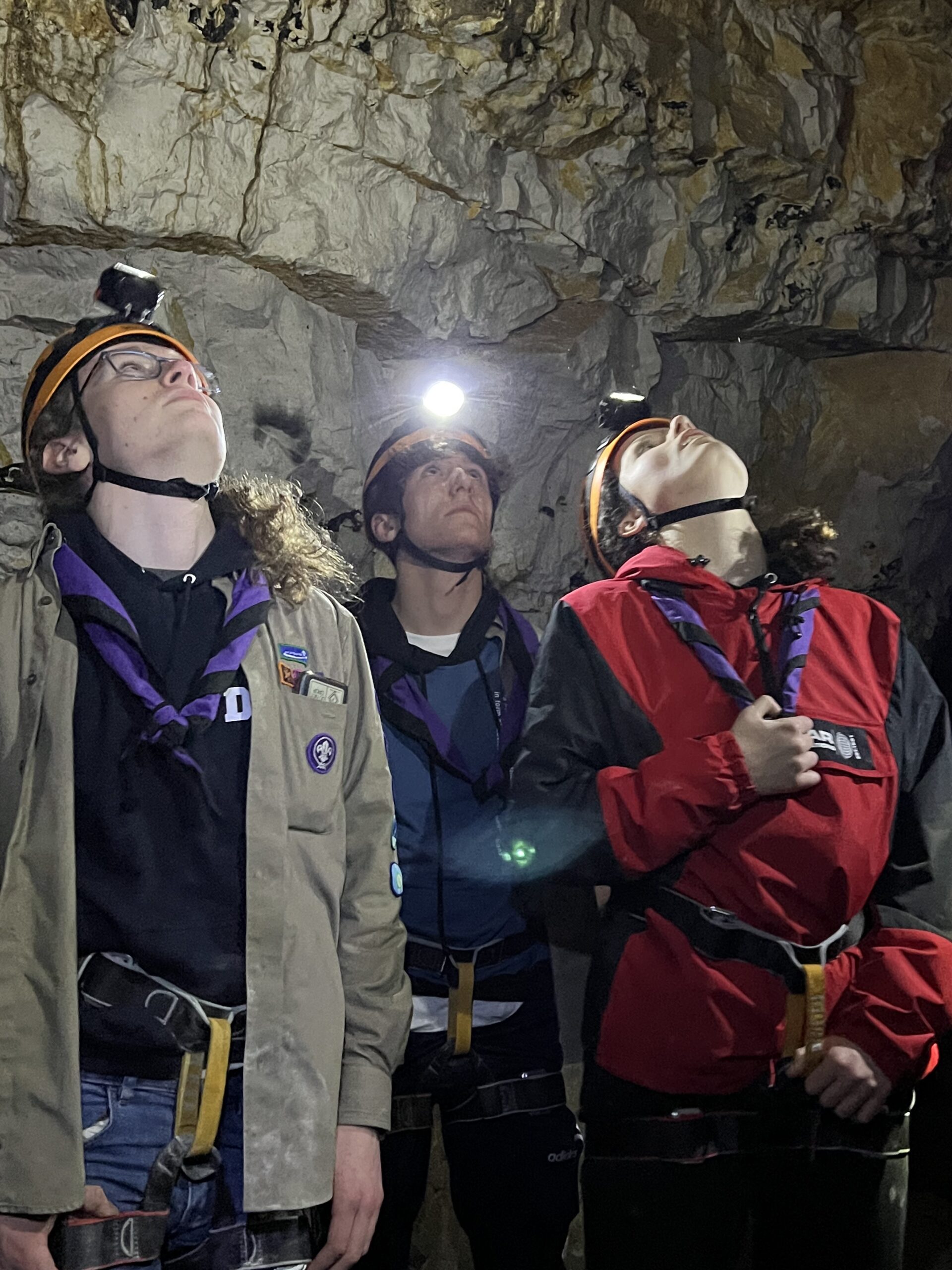
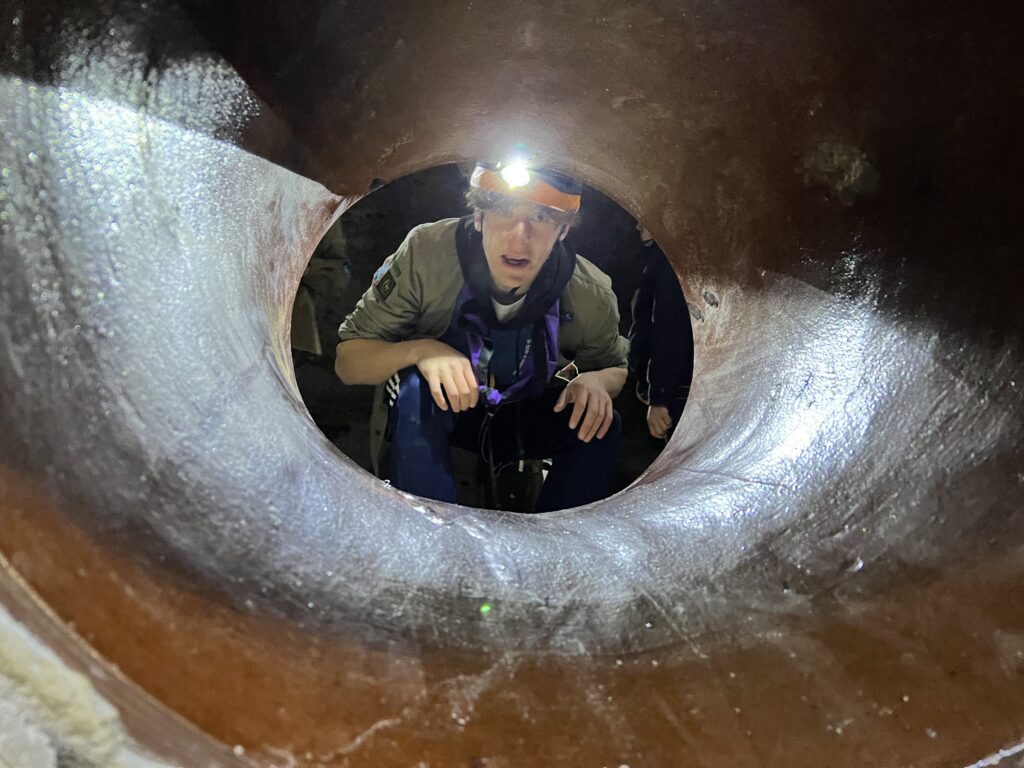
There was also talk of bats. This, let’s not forget, is also an actual Batcave. Robert Pattinson fans, calm down, we are of course talking flying mammals, rather than fictional crimefighters. Bat surveys undertaken of the Emmer Green mine system have identified three different species of bat using the underground complex: Natterer’s, Daubenton’s and Brown Long-eared. A further two species were recorded feeding above the entrance of the cave: Soprano Pipistrelle and Common Pipistrelle. One of our groups was lucky enough to see one – kapow! Much like the bat, our time in the chalk mine flew by. We were treated to anecdotes, stories, history and had the chance to stretch our legs – running up chalk slopes, through tight spots, and capturing glimpses of artefacts of times past.
We knew we would have to resurface of course – this time climbing back up using the ladder, with its slippery rungs. Safety was, of course, paramount but we were given the chance to use up any unspent energy with a quick jaunt up the mineshaft steps. While some threatened the time record, others took it at a more leisurely pace, savouring the final moments from what had been a truly unique experience. As we made our way back up, we left behind nothing more than footprints in the chalk… well, apart from the bats.
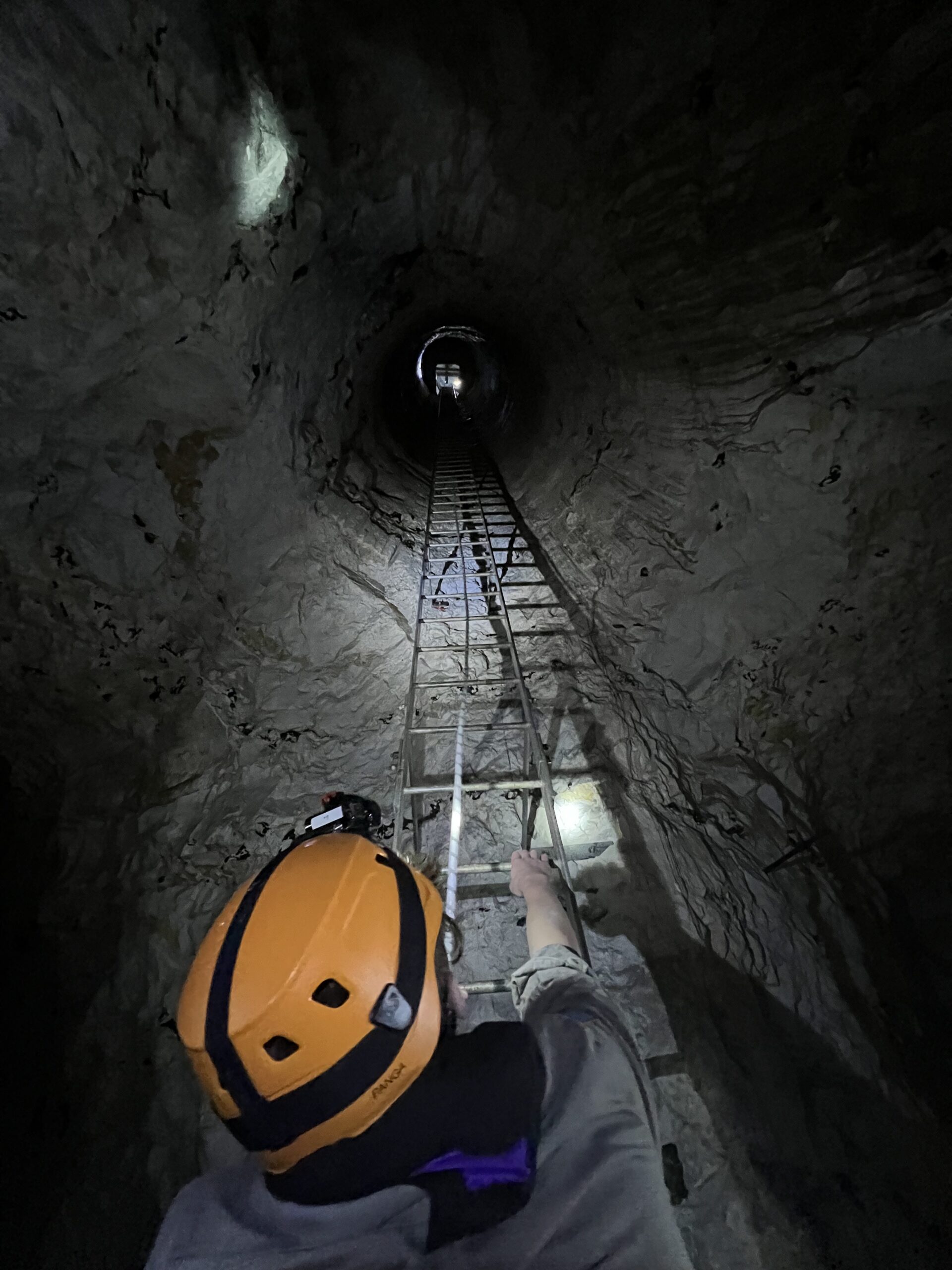
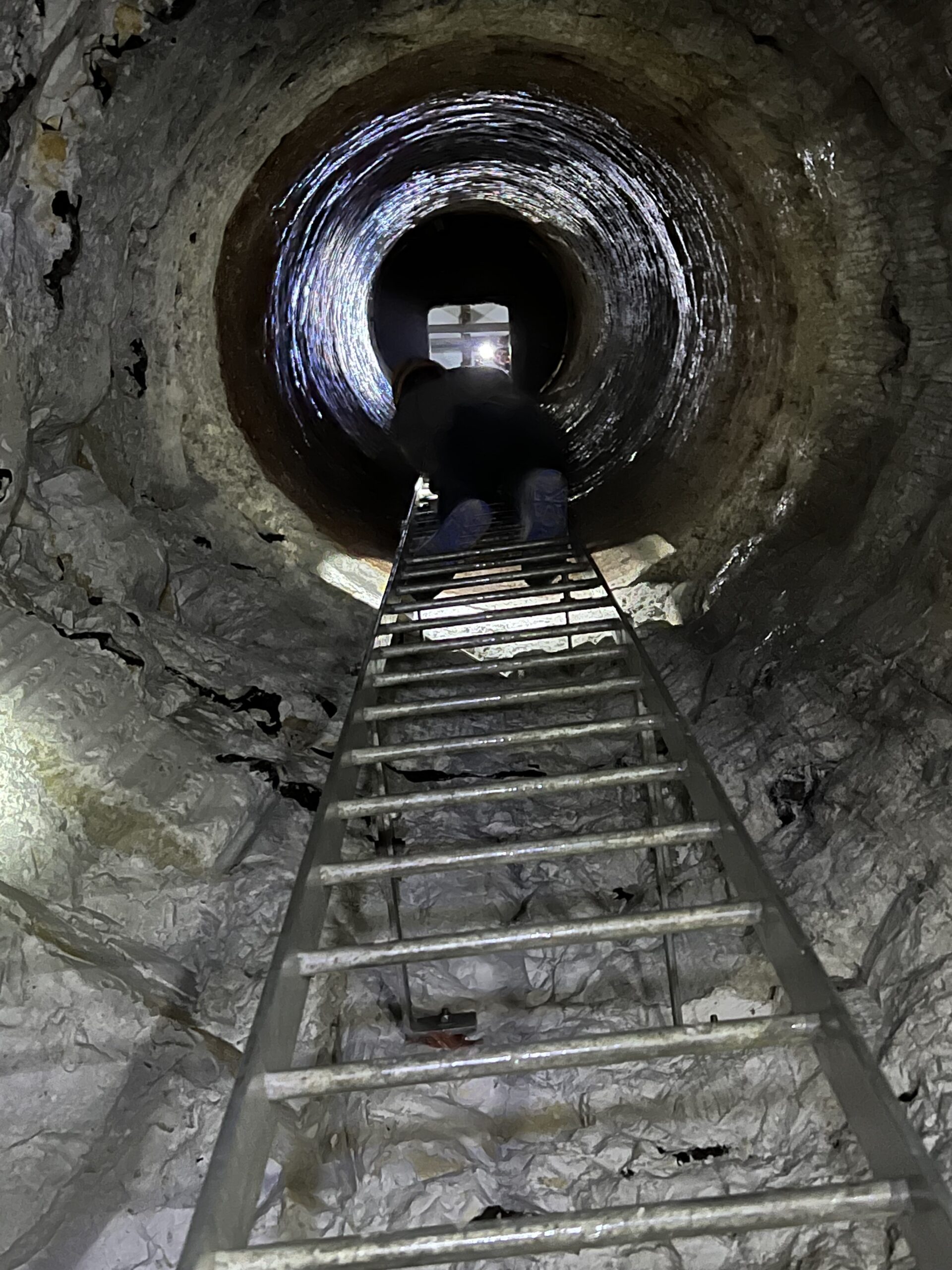
“The 89th moved to our current site in the early 1970s and the existence of the mine was well known,” explains 89th Reading’s Group Scout Leader Robin Kent. “At the time, the County started a caving club based around the mine. However, by the late 1980s / early 1990s, the nature of the old entrance to the mine meant that it didn’t meet modern health and safety standards. The mine stood unused apart from the occasional visits by the fire brigade and cave rescue groups for training purposes until we started to consider redeveloping the 89th site in 2010. Our vision was for a weekend activity centre and reopening the mine was a big part of that vision. With the help of the Gloucester Cave Rescue Group who designed the mine head, installed the fixed ladder, and provided our initial training, we reopened the mine for Scouts in 2013.”
Robin adds: “Having been down (and up!) over 70 times myself now we must have shown the mine to over 500 people, maybe nearer 750, and if you add the big cave rescue training days it will be over 1,000. Visitors are amazed by both the height and the extent of the mine workings, many not realising that they were under their feet!”
“Many were expecting the caverns to be much smaller and lower and for there to only be one or two of them,” he continues. “The history fascinates many too. Both the geological and more recent. I always start my tours with ‘you have just travelled through 70 million years of time and are standing at the bottom of a tropical sea’. We then talk about the part the chalk mining played in the brick works where production peaked in the Victorian period, and the WW2 connections always fascinated people too In the winter you may be lucky enough to see bats flying as the search for a winter hibernation roost when the surface temperature drops. The temperature in the mine, because of its depth is an ambient 10c all year round.”
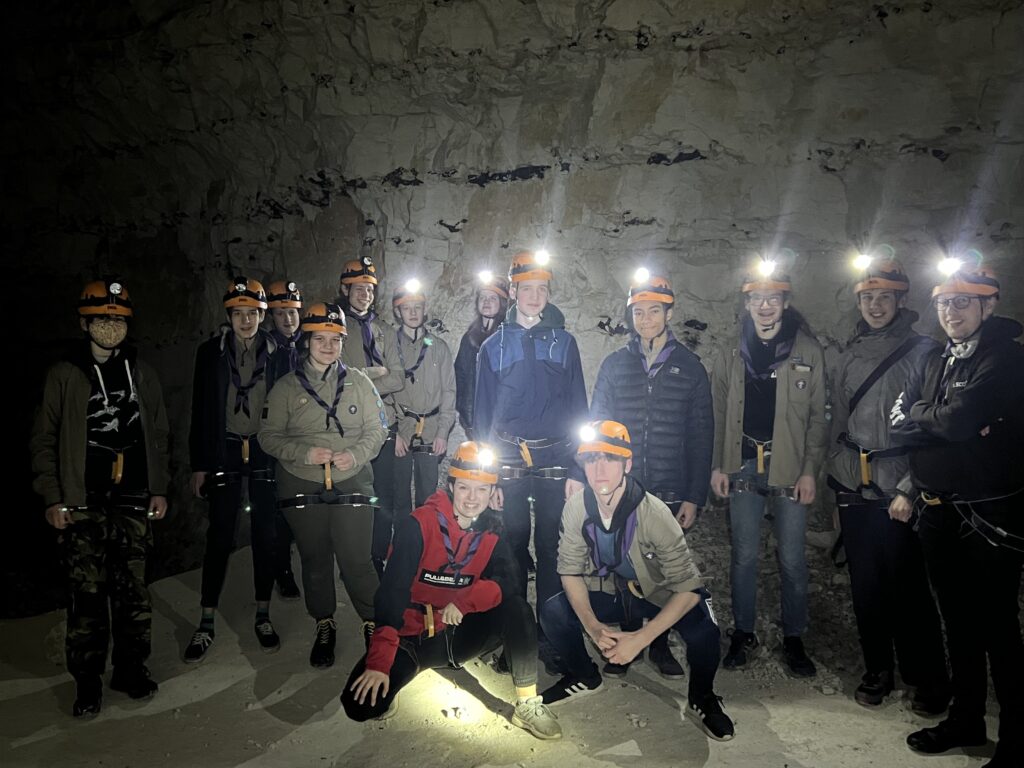
Click for more information about the 89th Reading Chalk Mine Adventure, or email John Potter: [email protected]

